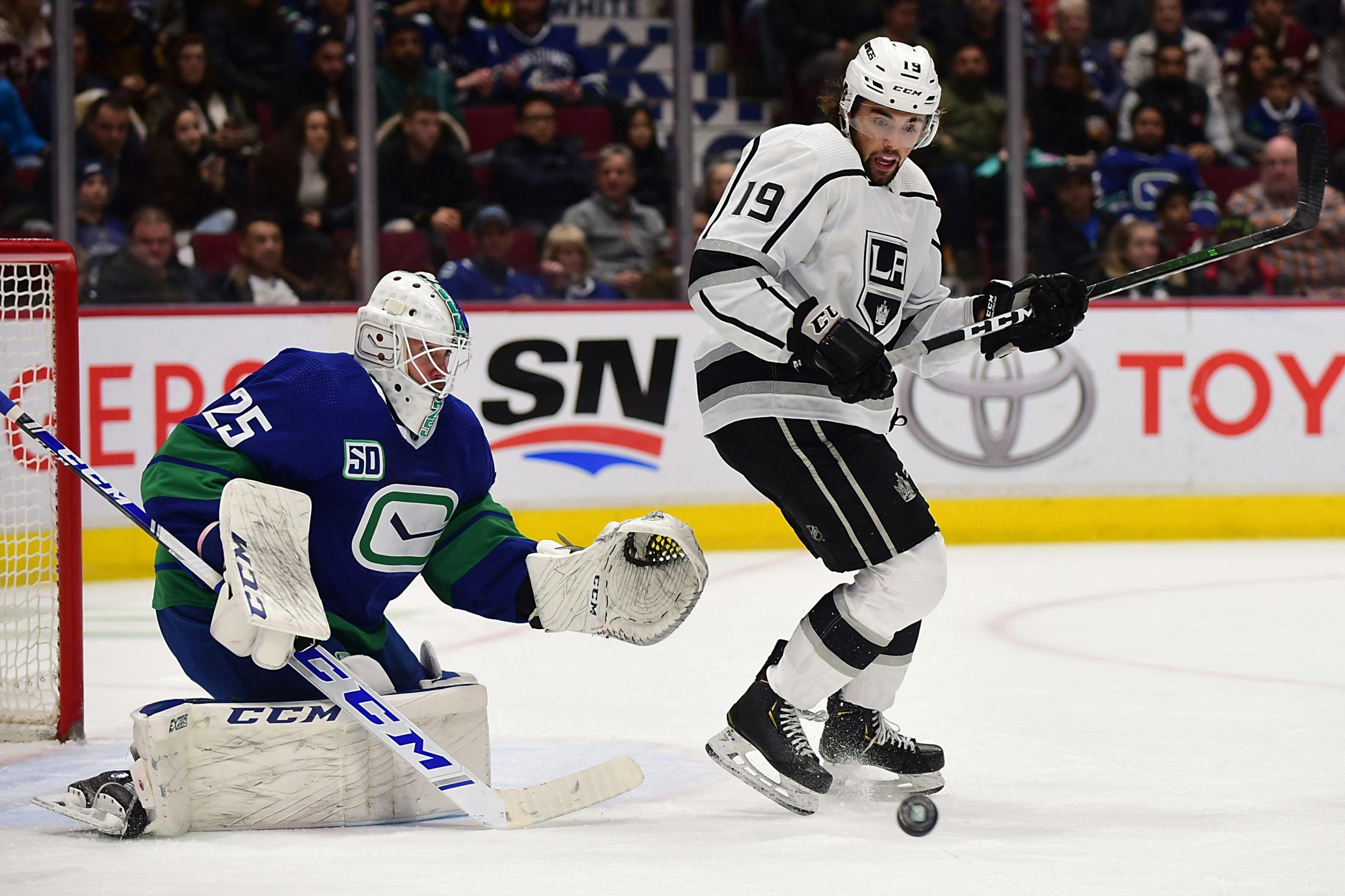The Canucks Are Poised to Take Advantage of a Historically Weak Pacific Division

4 years ago
Are the Canucks good?
A look at the Pacific Division standings would certainly suggest so.
Unfortunately, the underlying numbers don’t paint the rosiest picture.
In early December, I took a deep look at the Canucks’ underlying performance over the first two months of the season and concluded that they were likely to be a middling team for the rest of the year. A couple weeks later, I suggested they may even end up with worse underlying numbers at the end of the season than the ones they’d posted through October and November. In both cases, it appears I was correct, at least in a broad sense. Their xGF% has taken a dip from 50.3% in mid-December to 48.13% as of January 16th, and they’re no longer winning the shot-share battle. They currently sit below league average in both Corsi and expected goals-for percentage, ranking 18th and 23rd, respectively.
Where I went wrong was assuming that this would have any effect on the standings. While the team has posted below-average results for much of the past month, they’ve surged in the Pacific Division standings, and are now currently in striking distance of first place. It’s a testament both to Travis Green’s skill as a coach and the improvements that have been made to the roster over the past couple of seasons.
It’s also a testament to just how bad the Pacific has been this season.
| Team | Points | W | GF | GA | CF% | xGF% | PP% | SV% |
| CGY | 57 (10th) | 26 (10th) | 133 (23rd) | 142 (13th) | 50.2 (13th) | 49.62 (17th) | 18.9 (19th) | 91.11 (8th) |
| ARI | 57 (11th) | 26 (11th) | 143 (19th) | 131 (8th) | 48.01 (24th) | 48.53 (21st) | 19.9 (14th) | 92.01 (2nd) |
| VAN | 56 (13th) | 26 (12th) | 158 (8th) | 148 (14th) | 49.03 (18th) | 48.13 (23rd) | 23.9 (7th) | 90.63 (13th) |
| VGK | 56 (16th) | 25 (15th) | 155 (10th) | 149 (19th) | 53.75 (3rd) | 54.92 (2nd) | 21.9 (9th) | 90.12 (19th) |
| EDM | 55 (18th) | 25 (17th) | 148 (16th) | 150 (17th) | 47.36 (26th) | 48.41 (22nd) | 29.9 (1st) | 90.16 (18th) |
| SJ | 46 (26th) | 21 (26th) | 129 (24th) | 163 (29th) | 50.06 (16th) | 48.06 (25th) | 16.8 (24th) | 89.13 (28th) |
| ANA | 41 (28th) | 18 (27th) | 120 (29th) | 149 (16th) | 48.46 (22nd) | 47.16 (27th) | 15.2 (28th) | 90.07 (21st) |
| LA | 41 (29th) | 18 (28th) | 124 (30th) | 154 (24th) | 53.39 (4th) | 53.25 (5th) | 16.4 (26th) | 89.3 (27th) |
*Stats are as of January 16th, 2020
At the moment, there are only two teams in the Pacific with an xGF% above 50%, and a whopping five Pacific Division teams sit in the bottom-ten of the league in this metric. If that pattern holds, it will be the first time one division has been so heavily concentrated towards the bottom of the league in xGF% since the divisions and conferences were realigned in 2014. There’s a strong case to be made that the 2019-20 Pacific Division is the weakest division the NHL has seen in the past six years.
In terms of shot-share, things aren’t much better. Four teams are in the black by 5-on-5 Corsi for percentage, but the Sharks and Flames are holding on by the thinnest of threads. It should also be noted that one of the teams that is excelling by both metrics is the Los Angeles Kings, who can be considered a non-factor in the playoff race thanks to poor goaltending and a lack of shooting talent.
These numbers stand in stark contrast to how the division fared over the previous two years. In 2018-19, Calgary San Jose ,and Vegas were all sterling by xGF%, while Arizona hovered just below the 50% mark. In 2017-18, the Pacific had four teams above 50% in xGF%.
In terms of even-strength play, the Canucks really have not been a particularly good team. They’ve been middling-to-bad both offensively and defensively at 5-on-5, and outside of Quinn Hughes and the top-six, the roster has struggled to keep their heads above water. Luck has certainly played a factor in their success, both on the ice and in terms of the out-of-town scoreboard.
While there’s no doubt that the Canucks have been fortunate over the past month or so, they have still excelled in a couple of areas, and it’s been enough to keep them firmly in the race for first place in the Pacific Division. The first area is the power play, which ranks seventh overall in the league and second in the Pacific at 23.9%, behind only the Connor McDavid-led Edmonton Oilers. That’s enough to put those two teams in a class of their own in their division, with only the Vegas Golden Knights to give them a run for their money. They also lead the league in minor penalties drawn, which gives them ample opportunity to unleash their deadly power play on opponents and has resulted in the league’s second-best raw PPG total.
They’re also getting above-average goaltending. Jacob Markstrom is the Pacific’s fourth-best goaltender with more than ten starts by save percentage, behind only Arizona’s tandem of Antti Raanta and Darcy Kuemper, and Calgary’s Cam Talbot, who has started just 16 games.
When combined with strong special teams play and a top-six that can hold its own at even-strength, that’s enough not only to make the playoffs, but to make some noise in round 1, too. All they need is to hold steady, and for for the rest of the division to keep blowing it.





